Abstract
pBV-1, a recombinant plasmid that contains a chromosomal DNA fragment from Bacteroides vulgatus, hybridized to DNA from B. vulgatus but not to DNA from other colonic Bacteroides species. This plasmid was used as a DNA probe to detect and enumerate B. vulgatus in pure culture, in mixed cultures, and in a bacterial fraction from human feces. Bacteria in a pure or mixed culture were lysed by heating the culture in NaOH. The DNA in the disrupted cell suspension was then trapped on nitrocellulose paper by vacuum filtration. If fecal samples were used instead of pure or mixed cultures, it was first necessary to partially purify the DNA by low-speed centrifugation (2,000 X g) and phenol-chloroform extraction before filtering. When 32P-labeled pBV-1 was incubated with filters containg B. vulgatus DNA, the amount of radioactivity that bound to the filters was proportional to the number of B. vulgatus filtered as long as the filtering capacity of the nitrocellulose was not exceeded. Using this procedure, we obtained a value for the concentration of B. vulgatus in human feces (2 X 10(10) to 3 X 10(10) per g of dry weight) that is similar to values obtained by other investigators using conventional bacteriological techniques (3 X 10(10) to 6 X 10(10) per g of dry weight). The advantage of the DNA hybridization method over conventional techniques is that it is not necessary to isolate pure cultures of bacteria from complex specimens such as feces. Furthermore, our method bypasses the cumbersome set of biochemical tests normally used to identify anaerobic bacteria. The major limitation of our method is its sensitivity.(ABSTRACT TRUNCATED AT 250 WORDS)
Full text
PDF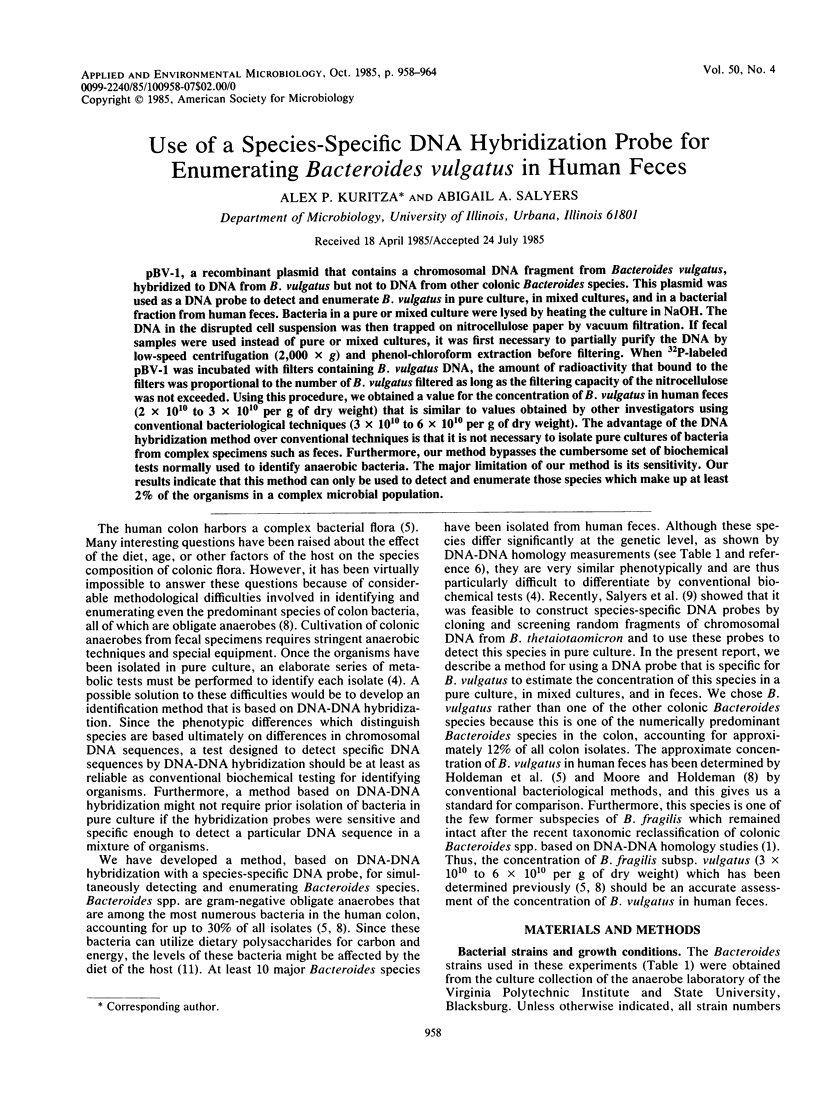
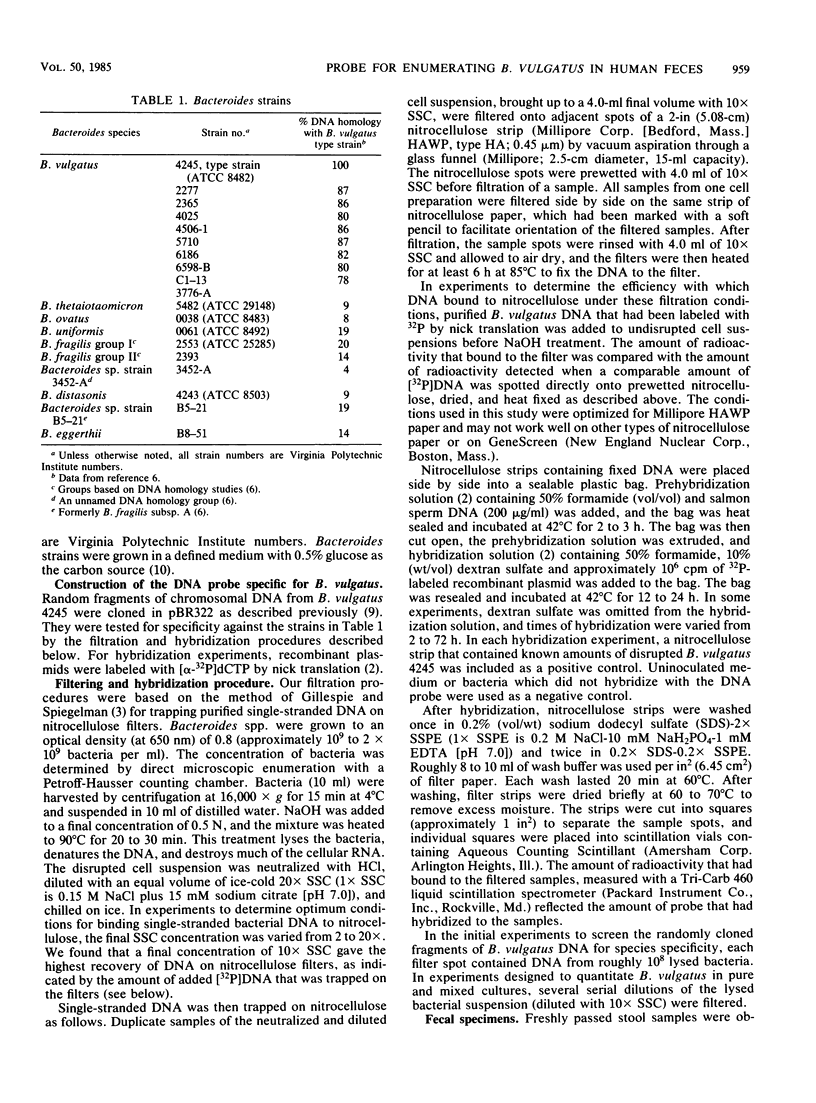
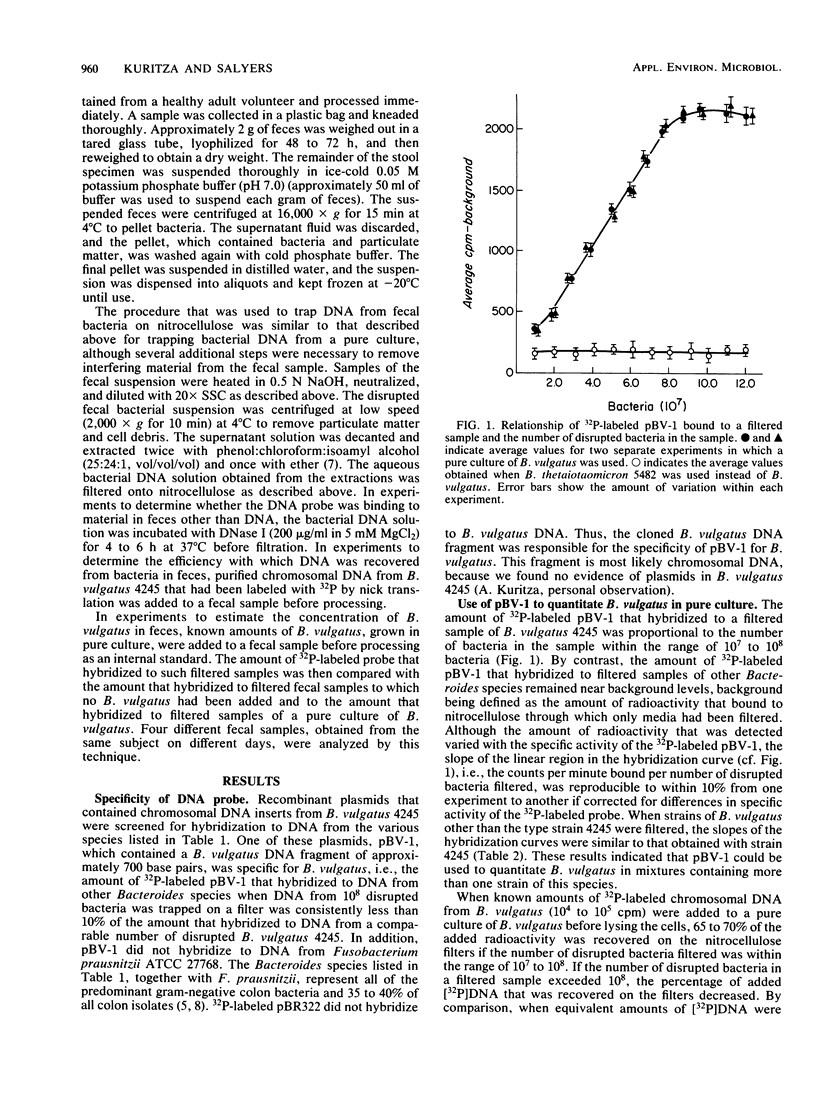
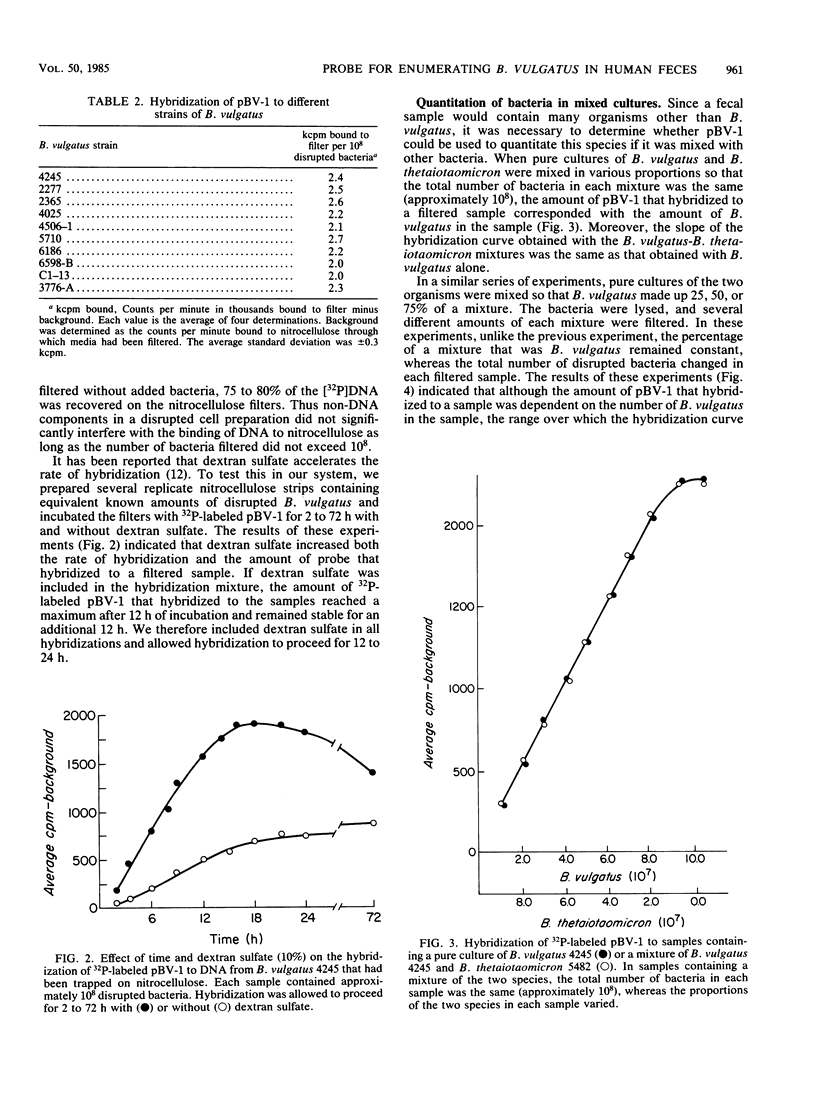
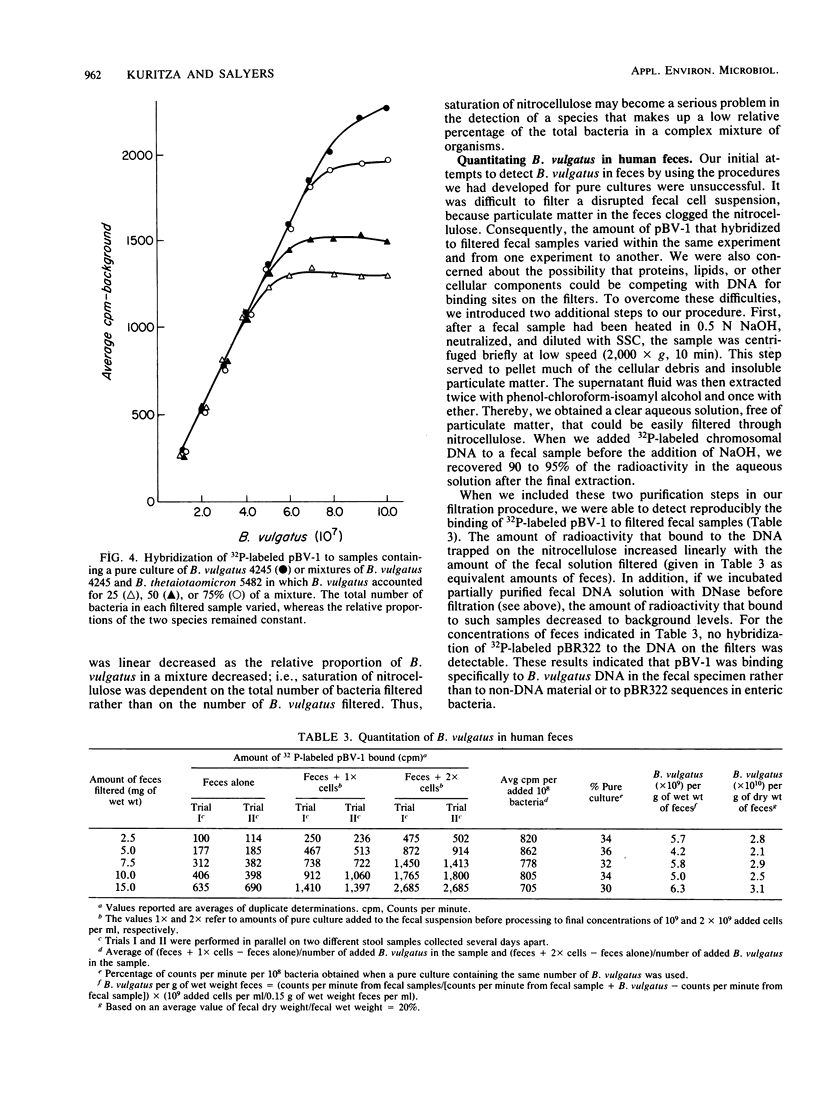
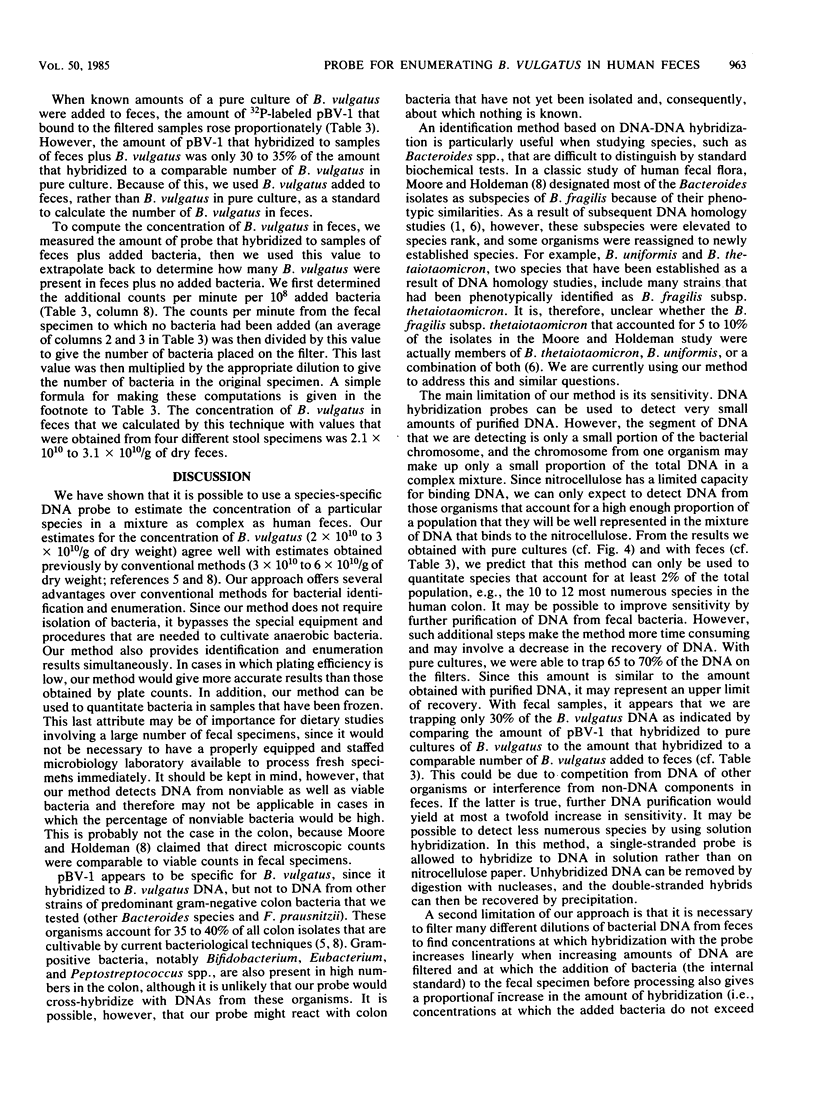
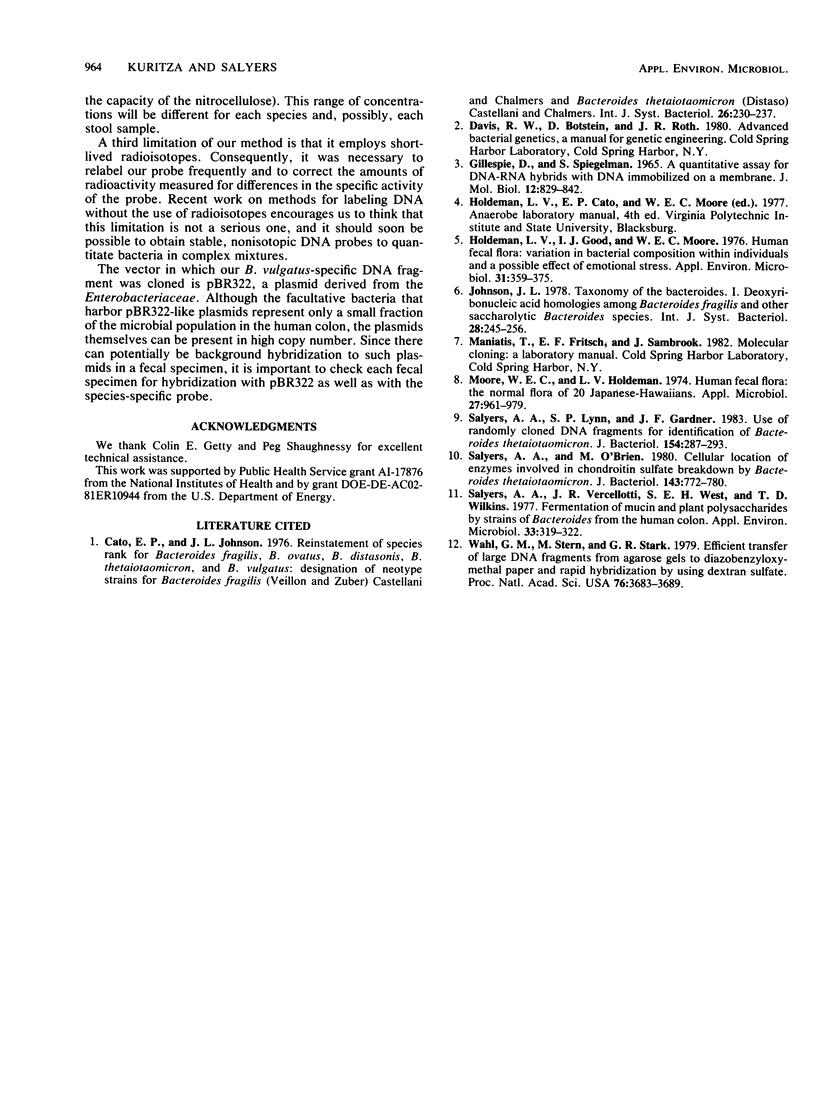
Selected References
These references are in PubMed. This may not be the complete list of references from this article.
- Gillespie D., Spiegelman S. A quantitative assay for DNA-RNA hybrids with DNA immobilized on a membrane. J Mol Biol. 1965 Jul;12(3):829–842. doi: 10.1016/s0022-2836(65)80331-x. [DOI] [PubMed] [Google Scholar]
- Holdeman L. V., Good I. J., Moore W. E. Human fecal flora: variation in bacterial composition within individuals and a possible effect of emotional stress. Appl Environ Microbiol. 1976 Mar;31(3):359–375. doi: 10.1128/aem.31.3.359-375.1976. [DOI] [PMC free article] [PubMed] [Google Scholar]
- Moore W. E., Holdeman L. V. Human fecal flora: the normal flora of 20 Japanese-Hawaiians. Appl Microbiol. 1974 May;27(5):961–979. doi: 10.1128/am.27.5.961-979.1974. [DOI] [PMC free article] [PubMed] [Google Scholar]
- Salyers A. A., Lynn S. P., Gardner J. F. Use of randomly cloned DNA fragments for identification of Bacteroides thetaiotaomicron. J Bacteriol. 1983 Apr;154(1):287–293. doi: 10.1128/jb.154.1.287-293.1983. [DOI] [PMC free article] [PubMed] [Google Scholar]
- Salyers A. A., O'Brien M. Cellular location of enzymes involved in chondroitin sulfate breakdown by Bacteroides thetaiotaomicron. J Bacteriol. 1980 Aug;143(2):772–780. doi: 10.1128/jb.143.2.772-780.1980. [DOI] [PMC free article] [PubMed] [Google Scholar]
- Salyers A. A., Vercellotti J. R., West S. E., Wilkins T. D. Fermentation of mucin and plant polysaccharides by strains of Bacteroides from the human colon. Appl Environ Microbiol. 1977 Feb;33(2):319–322. doi: 10.1128/aem.33.2.319-322.1977. [DOI] [PMC free article] [PubMed] [Google Scholar]
- Wahl G. M., Stern M., Stark G. R. Efficient transfer of large DNA fragments from agarose gels to diazobenzyloxymethyl-paper and rapid hybridization by using dextran sulfate. Proc Natl Acad Sci U S A. 1979 Aug;76(8):3683–3687. doi: 10.1073/pnas.76.8.3683. [DOI] [PMC free article] [PubMed] [Google Scholar]


